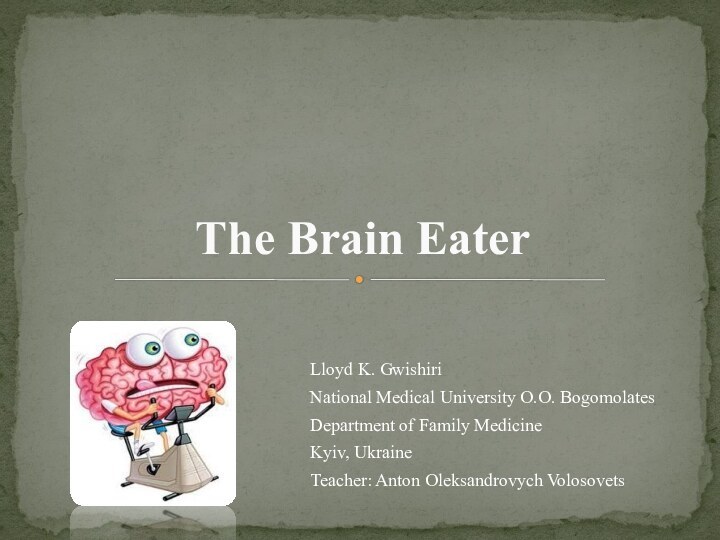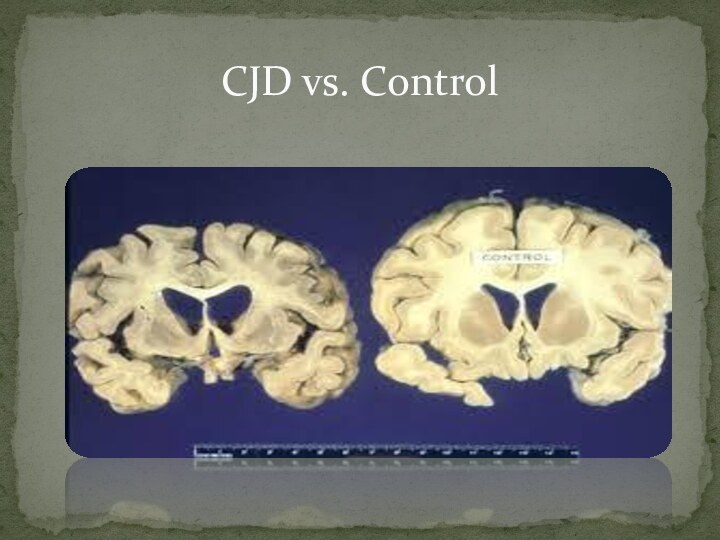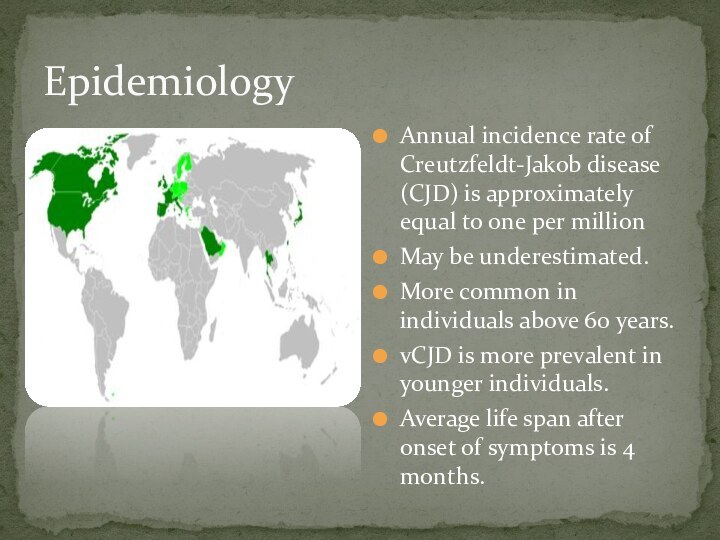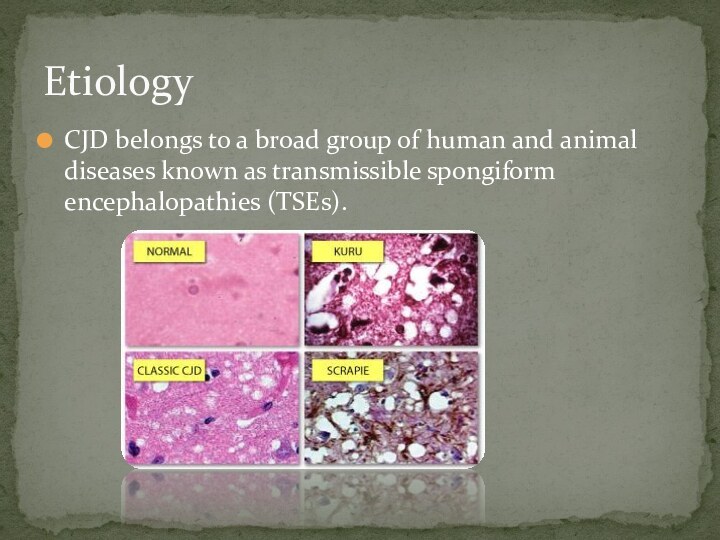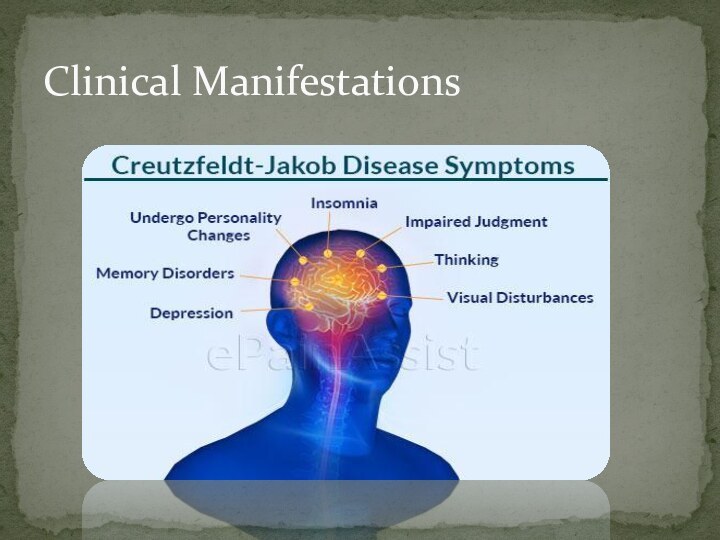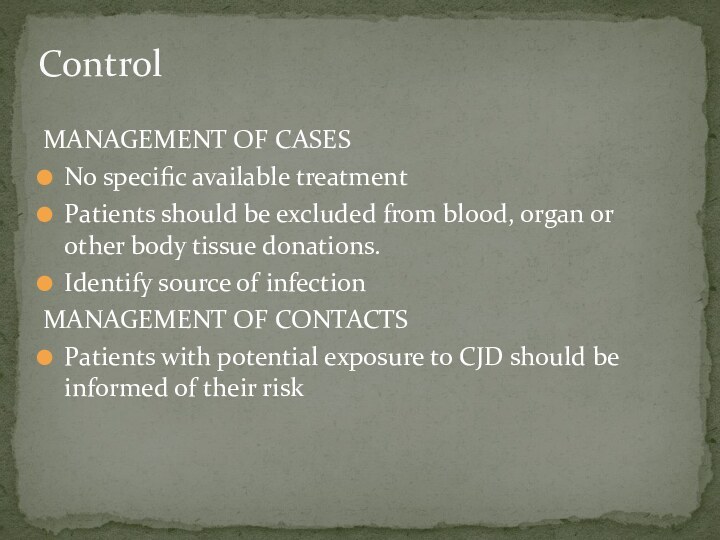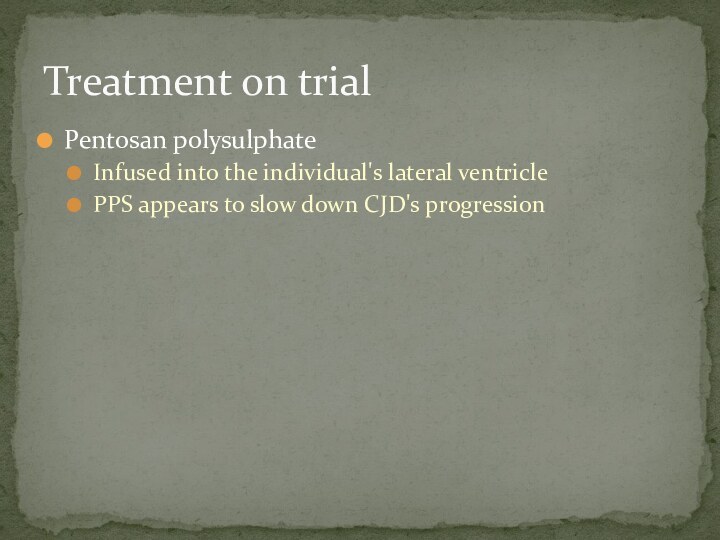Creutzfeldt-Jakob disease Changes not only in the brain?. Neurology, 79(10), 965-966.
de
Villemeur, T. B. (2012). Creutzfeldt-Jakob disease. Handbook of clinical neurology, 112, 1191-1193.
Merritt, H. H. (2010). Merritt's neurology. L. P. Rowland, & T. A. Pedley (Eds.). Lippincott Williams & Wilkins.
Riley, D. E., Lang, A. E., & Lewis, A. (2010). Creutzfeldt–Jacob Disease.Encyclopedia of Movement Disorders, 1, 263.
Sikorska, B., Knight, R., Ironside, J. W., & Liberski, P. P. (2012). Creutzfeldt-Jakob disease. In Neurodegenerative Diseases (pp. 76-90). Springer US.
References
